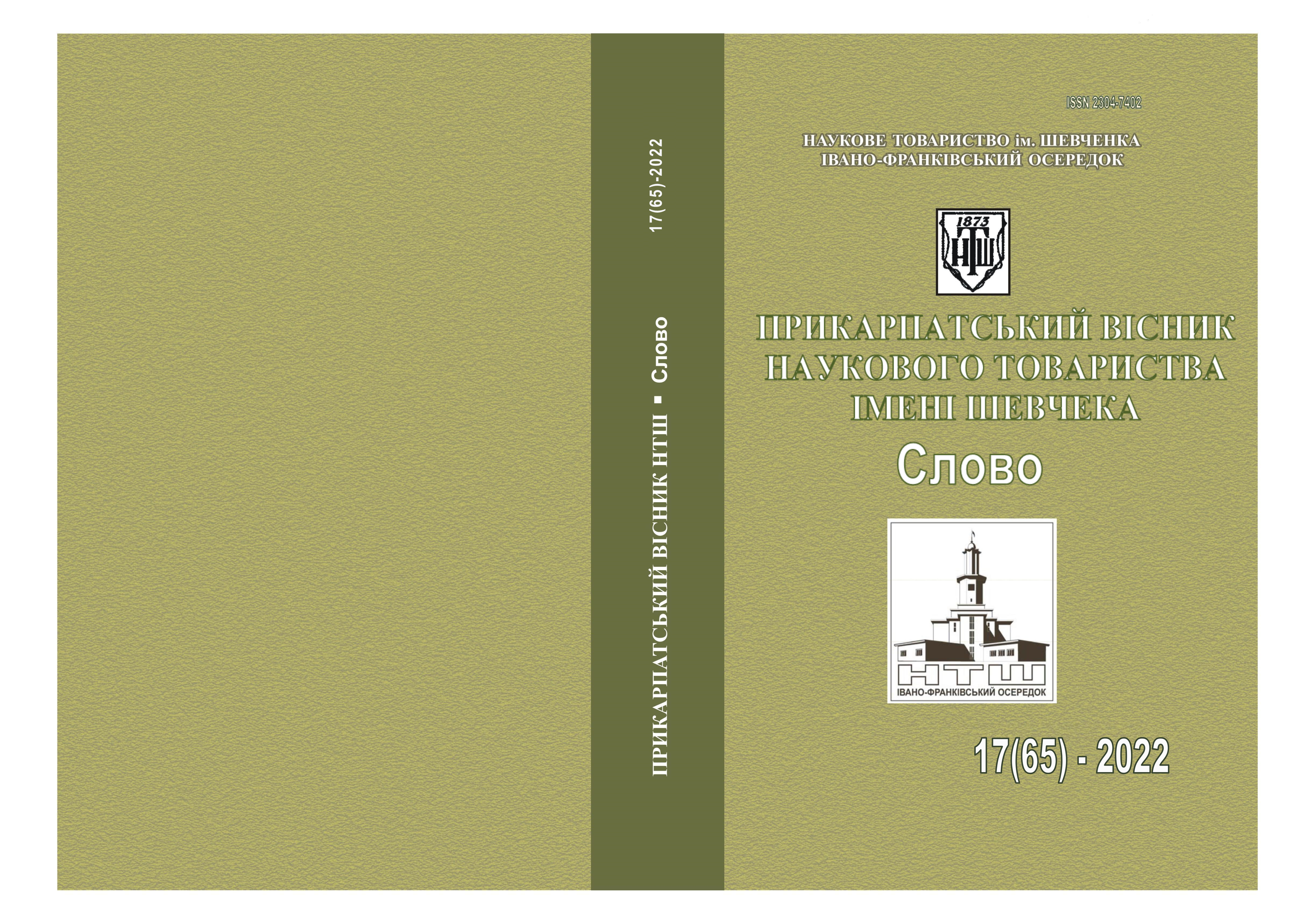WAYS OF REALIZING THE SIGNIFICANCE OF SYNTAX PERSONS IN THE POLISH LANGUAGE
DOI:
https://doi.org/10.31471/2304-7402-2022-17(65)-67-77Keywords:
syntactic person, agent, dative agentive, two-fold, definite-personal, impersonal and infinitive sentences.Abstract
The category of person occupies an important place among semantic and grammatical categories that affect both the structure of the sentence model and the formation of the communicative process. This category belongs to one of the most complex and controversial, which is why many scientists are constantly interested. Despite the active study, the category of the person needs a comprehensive study against the background of the entire grammatical structure of the language, which determines the relevance of the study. The purpose of the article is to analyze the semantic-grammatical category of person in the Polish language as an interlevel category in sentences with the semantics of definiteness.
The thesis focuses on complex analysis of the semantic-grammatical category of person in the Polish language; the above category is viewed as an interlevel one. In the sentence, the syntactic person depends on the morphological person (the inflectional category of person in the system of the categories of Verb, the lexical-grammatical category of person in the system of the categories of Pronoun and Noun); yet in terms of its grammatical characteristics, the former differs from the latter in meaning and means of expression; additionally, the syntactic person is a multidimensional category the most important feature of which is deicticity, i.e. indicating the participants of the speech act. The addressee and the addressee are the key concepts of expression, the indication of their opposition or lack of such an opposition is one of the main and mandatory features of a sentence.
The status of the category of the syntactic person is grounded in the concept of syntactic semantics as first and foremost the semantics of relations.
The agentive meaning is a component of the objective plan of the syntactic person category and reflects the "subject - action" relationship, while the subject can be represented as marked, unmarked or generalized. The novelty of the study is that the analysis of the definiteness of the person in the Polish language was carried out from the standpoint of a structural-semantic approach to linguistic phenomena.
The significance of the person-actor is expressed by two-fold, definite-personal, impersonal and infinitive sentences, in the structure of which there is an explicit or implicit indication of the performer of the action or the bearer of the state (agent). There are different ways of representing the specified agent: morphological, lexical-morphological, morphological-syntactic, contextual-situational, intonation-syntactic. The definiteness of the person in the Polish language is primarily indicated by the personal endings of predicate verbs in the forms of the 1st and 2nd person singular and plural (morphological method) together with the personal pronouns of the corresponding person (in this case we should talk about the lexical-morphological method) or without them With the morphological-syntactic method, the concrete subject is expressed not by the nominative, but by the indirect cases of nouns and personal pronouns.
Practical value. The obtained results will be useful for educational purposes in the study of Polish as a foreign language, in the process of teaching theoretical courses on grammar, in the preparation of textbooks and teaching aids on the syntax of the modern Polish language.
References
Арполенко Г.П., Забєліна В.П. Структурно-семантична будова речення в сучасній українській мові. Київ: Наукова думка, 1982. 131 с.
Булаховський Л.А. Питання синтаксису простого речення в українській мові // Дослідження з синтаксису української мови. Київ, 1958. С. 5 – 28.
Булаховський Л.А. Вибрані праці в 5 томах. Т.2. Українська мова. Київ: Наукова думка, 1977. 631 с.
Кононенко Ірина. Українська та польська мови: контраcтивне дослідження; Iryna Kononenko. Język ukraiński I polski: studium kontrastywne. Warszawa: WUW, 2012. 809 c.
Кононенко І. Типологія односкладних речень в українській і польській мовах // Studia Ucrainica Varsoviensia, 2014, №2. С.63 – 73.
Курилович Е. Очерки по лингвистике: сб. статей. Москва: Изд-во иностранной лит., 1962. 456 с.
Лингвистический энциклопедический словарь. Москва, 1990. 683 с.
Плющ М.Я. Категорія відмінка в семантико-синтаксичній структурі речення: [монографія]. Київ: Національний пед. ун-т ім. М. Драгоманова, 2016. 250 с.
Слинько І. І., Гуйванюк Н. В., Кобилянська М.Ф. Синтаксис сучасної української мови: Проблемні питання. Київ: Вища школа, 1994. 670 с.
Grzegorczykowa R. Wykłady z polskiej składni.Warszawa: PWN, 2004. 159 s.
KonecznaH. Funkcjezdań jednoczłonowych i dwuczłonowych w języku polskim //Problemy składni polskej. Studia * dyskusje * polemiki z lat 1945 – 1970. Warszawa: PWN, 1971. S. 60 – 92.
Nagórko A. Zarys gramatyki polskiej. Warszawa: PWN, 1996. 235 s.
Pisarkowa K. Historia składni języka polskiego. Wrocław – Warszawa – Kraków – Gdańsk – Łodź: WPAN, 1984. 289 s.
Rittel T. Kategoria osoby w polskim zdaniu.Warszawa – Kraków: PWN, 1985.320 s.

